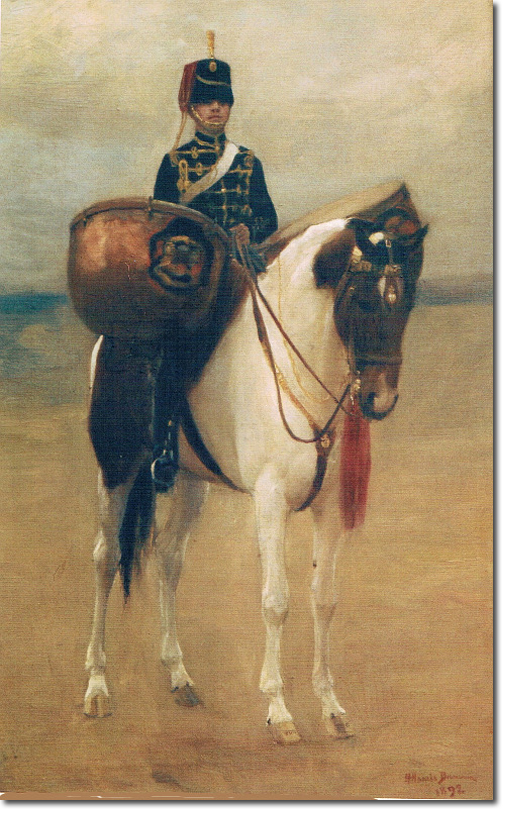|
|


|
|
R G Harris writes in his article on drum-horses of the 20th Hussars in the bulletin for the Military Historical Society of a horse acquired by the regiment in 1889:
'In 1889 the 20th Hussars obtained a splendid four-year-old horse from the Remount Depot in Ireland, and after training as drum-horse was seen on parade in London in 1890. The lance-corporal drummer wore the normal hussar uniform although by this time the busby had been reduced in size but was still ornamented with the scarlet bag and plume. In October 1895 the regiment handed over its drum-horse to the 3rd Dragoon Guards before sailing for India, where it remained until the South African War broke out.' This painting of that drum-horse is clearly dated as 1892, and shows a piebald horse, which unfortunately is not named in Harris's article. For some reason the artist painted the subject without the embroidered drum-banners. But this gives us a good opportunity to see what the kettle drums looked like. They are copper and have some sort of device on the front. It is a shame that the details of this cannot be seen clearly. The harness looks similar to the one used in later photos, and the throat plume is crimson. In 1892 the 20th Hussars changed the colour of their busby plumes from crimson to yellow at the instigation of the commanding officer, Lord Beaumont, who financed the change out of his own pocket. This painting confirms the adoption of the yellow busby plume at this time. Officers also had a yellow horsehair plume on their bridles although this was unofficial at that time. It is usually assumed that the drum-horse also had a yellow plume but this painting proves otherwise. The painting was photographed at Tidworth where the King's Royal Hussars were stationed, in 2001. |
Regimental Details | Musicians and Trumpeters
Armed Forces | Art and Culture | Articles | Biographies | Colonies | Discussion | Glossary | Home | Library | Links | Map Room | Sources and Media | Science and Technology | Search | Student Zone | Timelines | TV & Film | Wargames